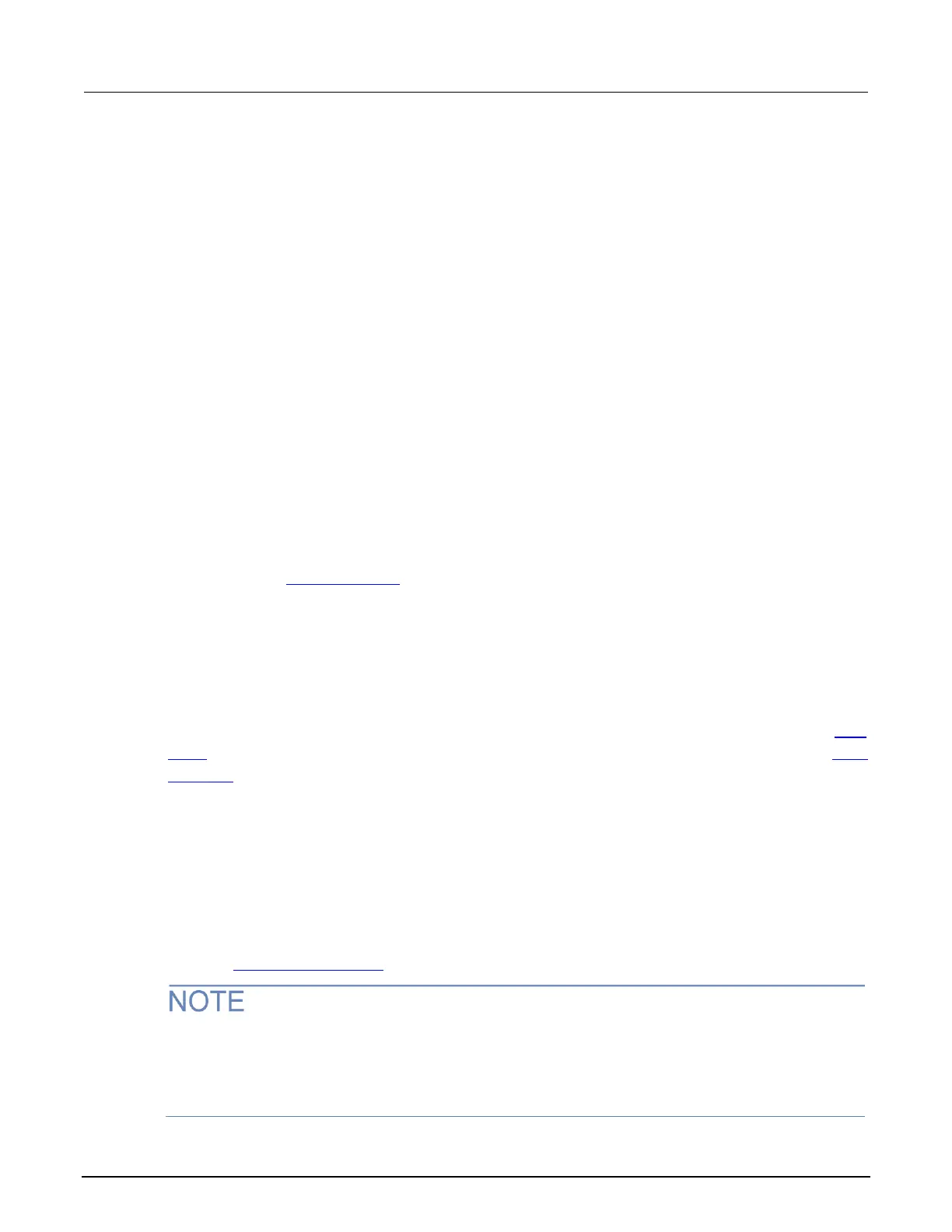Section 4: Sourcing and measuring Model 2601B-PULSE System SourceMeter Instrument Reference Manual
4-2 2601B-PULSE-901-01A April 2020
When the pulser is disabled, the instrument provides the full functionality of a 4-quadrant SMU. You
can use the front panel or remote commands to configure the instrument to perform the following
source-measure operations:
• Source voltage: Measure and display current, voltage, resistance, or power
• Source current: Measure and display voltage, current, resistance, or power
• Measure resistance: Display resistance calculated from voltage and current components of
measurement (can optionally specify source voltage or source current value)
• Measure power: Display power calculated from voltage and current components of
measurement (can optionally specify source voltage or source current value)
• Measure only (V or I): Display voltage or current measurement
When the pulser is enabled, the instrument generates fast-edge current pulses only. It measures
current, voltage, resistance, or power. The pulser sourcing and measuring functionality is only
available using remote commands. Pulser protection levels and some measurements are displayed
on the front-panel interface.
Limits
Limits are only applied when the pulser is disabled. When the pulser is enabled, protection levels are
applied. Refer to Pulser operation (on page 4-33) for more information.
When sourcing voltage, the 2601B-PULSE can be set to limit current or power. Conversely, when
sourcing current, the 2601B-PULSE can be set to limit voltage or power. In steady-state conditions,
the 2601B-PULSE output will not exceed the limit. The maximum limit is the same as the maximum
values listed in the following table.
The limit circuit will limit in either polarity regardless of the polarity of the source or limit value. The
accuracy of the limit opposite in polarity from the source is diminished unless the instrument is in sink
mode (on page 4-5). The maximum limits are based on source range. For more information, see Limit
principles (on page 7-2).
The limit operation of the instrument changes dependent on the source mode (current or voltage),
load, and the configured limits (current, voltage, and power). It is important to distinguish both the
current and voltage limits from the power limit. As the names imply, the current limit restricts the
current for sourced voltage, and the voltage limit restricts the voltage for a sourced current. The
power limit, however, restricts power by lowering the present limit in effect (voltage or current) as
needed to restrict the SMU from exceeding the specified power limit. For additional details on using
limits, including load considerations when specifying both a current (or a voltage) limit and a power
limit, see Operating boundaries (on page 7-6).
The only exception to the limit not being exceeded is the voltage limit when operating as a current
source. To avoid excessive (and potentially destructive) currents from flowing, the voltage limit will
source or sink up to 102 mA for current source ranges on or below 100 mA. For the ranges 1 A and
above, the maximum current allowed is the current source setting.

